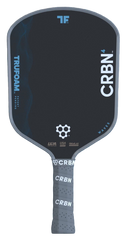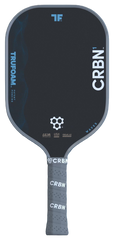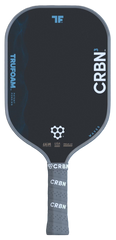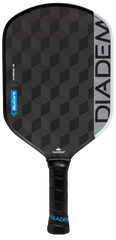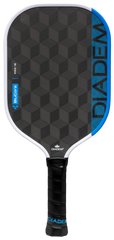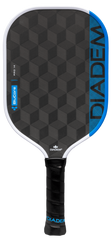Pickleball and tennis are among the hottest racket sports out there, each with its own set of rules, gear, and lively communities.
While both games have their similarities, they also come with distinct features that attract different types of players. This article dives into the essence of pickleball and tennis, taking a look at their histories, examining the differences in equipment and courts, and comparing their rules and scoring systems.
You'll also get insights into the physical demands and skill sets needed for each sport, along with a peek into their vibrant cultures. Whether you’re a seasoned pro or just dipping your toes into the world of racket sports, understanding these differences will definitely boost your appreciation for both games.
What Is Pickleball?
Pickleball is such an exciting racket sport that mixes the best elements of tennis, badminton, and ping-pong. You’ll find it offers a fun and engaging experience for players of all ages.
Whether you’re playing singles or doubles, the game has a unique court size and a net height that makes for quick volleys and strategic gameplay. It’s no wonder pickleball has skyrocketed in popularity!
It attracts a diverse crowd and creates vibrant communities where social interaction and friendly competition flourish.
What Is Tennis?
Tennis is a popular racket sport played on a rectangular court, and you’ll definitely recognize it by its unique lines and the net that splits the playing area. You can play singles or doubles, and the goal is to use your racket to hit a felt-covered rubber ball over the net, scoring points with different strategies and playing styles.
With its rich history and worldwide appeal, tennis draws in a diverse crowd of players and fans, making it a favorite for both fun matches and serious competitions.
History of Pickleball and Tennis
The history of Pickleball and Tennis tells some pretty fascinating stories about where they came from and how they’ve evolved over time. You’ll see how these two racket sports have skyrocketed in popularity around the world.
Tennis made its debut in the late 19th century, stemming from older racket games, while Pickleball popped up in the 1960s as a fun backyard activity and has since morphed into a competitive sport loved by people of all ages and backgrounds.
Both sports really capture changing trends and cultural influences, which is a big part of why they’re so appealing in recreational leagues and tournaments today.
Equipment and Court Differences
Understanding the differences in equipment and court styles between Pickleball and Tennis is super important if you want to smoothly transition between the two or just enjoy both sports to the fullest.
In Pickleball, you use a solid, perforated paddle, while in Tennis, you're swinging a racket with strings to hit that felt-covered ball. Plus, the court sizes are quite different, and that really affects how you play and strategize in each sport.
Don’t forget about the different types of balls and playing surfaces that cater to specific playing styles, too. It’s all part of the game!
What Equipment Is Required for Pickleball?
To play Pickleball, you need some specific gear to make the experience fun and keep things fair. First up is the paddle, which is your trusty tool for striking that lightweight ball. These paddles are usually made from different materials, and that choice really affects how durable they are and how they perform on various court surfaces. You’ll also need a Pickleball, which can be either for indoor or outdoor play, and each type has its unique characteristics that influence how it bounces and flies.
Regarding choosing a paddle, the material you go for can really change the game. You’ve got options like wood, composite, and graphite, each offering different weights and levels of control. It’s all about finding what fits your style of play. You’ll probably want to think about factors like grip, surface texture, and how balanced the paddle feels in your hand.
Don’t forget about the ball—it's just as important! Indoor balls are generally softer with fewer holes, making for a quieter game, while outdoor balls are built tougher to handle whatever the weather throws at them. Your choices in both paddles and balls are key to how they perform on the court, whether you’re on asphalt, concrete, or those specialized Pickleball courts that really let you shine.
What Equipment Is Required for Tennis?
Regarding tennis, the essentials you need are a racket and a felt-covered ball. These two pieces of equipment are crucial for not just enjoying the game but also for improving your skills. Rackets come in different sizes and weights, so you can pick one that matches your personal preferences and playing style.
You’ll also want to choose specific tennis balls that are optimized for the type of court you’re playing on, whether it’s grass, clay, or hard surfaces.
Picking the right racket is key to getting the best performance out there. The string tension and head size can really make a difference in how well you control the ball and how much power you can generate. Don’t forget about accessories, either! Grips, stringing machines, and vibration dampeners play a vital role in keeping you comfortable and reducing the risk of injury.
And let’s not overlook footwear—having the right shoes is super important. Different shoes are designed for various court surfaces, giving you the traction and support you need to play your best.
By understanding the range of equipment and how it affects your game, you can make informed choices that really enhance your experience on the court.
What Are the Differences in Court Size and Layout?
The differences in court size and layout between Pickleball and Tennis really shape the dynamics of each game, impacting how many players can join in and the overall gameplay. A Pickleball court is smaller, measuring 20 feet wide by 44 feet long for doubles play. This compact space encourages quick exchanges and tactical strategies.
On the flip side, a standard Tennis court measures 36 feet wide by 78 feet long, giving players more room to move around and leading to longer rallies. This setup caters to different skill levels and playing styles.
This distinction doesn’t just change how you engage with the ball; it also affects how many competitors can effectively play in a match. With Pickleball's smaller area, you get a more intimate experience, often resulting in strategy-driven rallies where good communication with your partner becomes crucial.
Meanwhile, on the expansive Tennis court, you can unleash a variety of shots, leading to prolonged exchanges that really showcase your athleticism and endurance. The larger dimensions of Tennis allow for varied player formations and strategies, emphasizing your individual skill and adaptability as you navigate those longer play sequences.
Rules and Scoring Differences
The rules and scoring systems in Pickleball and Tennis have some key differences that really shape how you play, so it's important to get a handle on both.
In Pickleball, you play games to 11 points, but you need to win by at least two points. Tennis, on the other hand, has various formats, like best of three or five sets, which can make matches last a lot longer.
Plus, the service area and the rules around serves and volleys are quite different between the two sports, so knowing those nuances can really help you out on the court.
What Are the Basic Rules of Pickleball?
The basic rules of Pickleball are all about making the game fun and easy to get into. First off, you've got to serve the ball diagonally into your opponent's service area. And when you're playing, be sure to avoid the non-volley zone; it adds a nice layer of strategy to your shots. Scoring usually happens only when the serving side wins a rally, so mastering your serve and volley technique is key.
Now, beyond these basics, there are some important gameplay regulations you’ll want to keep in mind to really level up your experience. For example, the game is played to 11 points, and you have to win by at least two points to claim victory. After you serve, both players on your team get a chance to play before the serve rotates, which makes teamwork and communication extra important.
Getting a grip on the rules about faults—like stepping into the non-volley zone during a volley or failing to hit the ball within the right area—can really change the flow of the match and help you make smarter plays.
What Are the Basic Rules of Tennis?
Tennis comes with a set of basic rules that dictate how you play the game, starting with the serve. You need to get that serve into your opponent's service area to kick things off. Points are scored by hitting the ball over the net and into your opponent's court, but they can’t return it before it bounces twice—so aim for those gaps!
The unique scoring system—15, 30, 40, and game—adds a layer of strategy that keeps you and everyone watching on the edge of their seats.
Matches are usually played in a best-of-three or best-of-five sets format, which adds even more tactical depth to your gameplay. The rules also define the exact dimensions for the service boxes, so your serve has to clear the net and land within those lines to count.
Now, unlike Pickleball, where the scoring and service rules are quite different, you have to deal with the concept of 'deuce' in Tennis. If both you and your opponent reach 40, you need to score an extra point to win the game. These regulations, along with the requirement to alternate serving, create a dynamic challenge that makes Tennis a sport all about skill and strategy.
How Is Scoring Different in Pickleball and Tennis?
Scoring in Pickleball and Tennis has some key differences that can really shape how you approach your matches. In Pickleball, you can only score points when you're serving, while in Tennis, both you and your opponent have the chance to score points during rallies. This fundamental difference means you’ll adopt distinct strategies—Pickleball leans toward serve-and-volley tactics, whereas Tennis opens up to a wider range of gameplay strategies.
In Pickleball, the scoring system usually follows a best of three games format, where you need to reach 11 points to win a game, but you must lead by at least two points. This keeps things moving quickly, encouraging you to take advantage of those serving opportunities for rapid points.
On the other hand, Tennis matches often follow a best of three or five sets format, with each set usually requiring you to win 6 games. This setup leads to longer rallies and more complex point plays. Plus, being able to break your opponent’s serve adds another layer of strategy, shifting the focus to endurance and precision as you constantly switch between offense and defense.
Physical Demands and Skill Differences
The physical demands and skill differences between pickleball and tennis really show how these sports cater to different fitness levels and athletic abilities, which can impact your engagement and performance.
Pickleball is all about quick reflexes and solid hand-eye coordination, thanks to its smaller court size, making it a lot more accessible for players of all ages.
On the flip side, tennis requires a higher level of endurance and technique. You'll be covering more ground on larger courts and getting into those longer rallies, which can be quite the workout!
How Do the Physical Demands of Pickleball Compare to Tennis?
When you compare the physical demands of Pickleball and Tennis, it’s pretty clear that both sports require fitness and coordination, but they do so in different ways and intensities. You might think of Pickleball as the laid-back cousin of Tennis, thanks to its smaller court size, which means shorter bursts of activity instead of that nonstop running you see in Tennis. On the other hand, Tennis players really need to build up their endurance and movement skills to cover those larger courts effectively.
This difference really shapes the kind of athleticism you need for each game. In Tennis, you’re looking at long rallies that call for serious cardiovascular fitness, plus the explosive strength to serve and volley with power. Add in the need for agile footwork and precise shot placement, and you’ve got quite the physical challenge on your hands.
Now, don’t be fooled into thinking Pickleball is a walk in the park. While it might look easier, it still requires quick reflexes, smart positioning, and solid hand-eye coordination to really shine. The fast pace of the rallies and the need to read your opponent’s moves in a tighter space show that both sports, despite their differences, bring their own unique challenges that can boost your overall fitness.
What Are the Key Skills Needed for Pickleball and Tennis?
Both Pickleball and Tennis require some key skills that are essential for your success, even if the techniques and strategies differ based on the unique gameplay of each sport. In Pickleball, you’ll want to focus on honing your hand-eye coordination, reflexes, and your ability to anticipate what your opponents are up to. On the other hand, in Tennis, you’ll need to master footwork, stroke mechanics, and strategic shot placement to really shine on the court.
While both sports have some similarities, the way you apply those skills can change quite a bit depending on your experience level. As a beginner in Pickleball, you might find yourself working on nailing the serve and figuring out court positioning—it's a bit simpler than the intricate footwork drills you’d tackle in Tennis, especially when you’re just starting out.
As you advance, you’ll notice that while reflexes and anticipation are key to both games, the intensity and complexity of the strategies really ramp up. This means you'll need to adapt your approach as you gain experience. This adaptability not only boosts your performance but also makes the game way more enjoyable for you.
Community and Culture Differences
The community and cultural differences between pickleball and tennis really shape the experiences of both players and spectators, influencing how you and others perceive and enjoy these sports.
Pickleball has built a reputation for its welcoming, family-friendly vibe, bringing together diverse age groups and promoting community-building events and social interactions.
On the other hand, tennis has this rich tradition of competitive tournaments and professional leagues that attract dedicated fans and athletes. Each sport has its own unique flavor, and you can definitely feel it when you’re involved in either one!
What Is the Community Like for Pickleball and Tennis?
The community around Pickleball is all about inclusivity and friendliness, making it super easy for players of all skill levels to join in and enjoy the game together. This sport really fosters a strong sense of camaraderie, with lots of clubs and recreational leagues that focus on social aspects and community events, welcoming families and newcomers alike.
On the flip side, the Tennis community, while also supportive, tends to have a more competitive vibe, with a spotlight on professional leagues, events, and organized tournaments.
Both sports have their own unique social events that not only help you sharpen your skills but also build lasting friendships. For example, those weekly game nights and round-robin tournaments in Pickleball are great opportunities for you to connect and socialize, making it easy to feel like part of the group, no matter your experience level.
Meanwhile, Tennis clubs often organize mixers and charity events, where players of all abilities can engage in some friendly competition while also giving back to the community.
In their own ways, each sport, with its variety of recreational leagues and fun activities, helps bridge gaps between community members, encouraging a spirit of fun and collaboration.
What Are the Cultural Differences Between Pickleball and Tennis?
You can really see the cultural differences between Pickleball and Tennis in how each sport is celebrated and played, often reflecting broader social dynamics and the fun factor tied to each game. Pickleball comes off as the more casual, fun-oriented sport, drawing in a wide range of age groups and encouraging social interaction. On the flip side, Tennis carries a more formal vibe, often associated with competitive play and elite tournaments.
These distinctions go beyond mere appearances; they shape the communities that develop around each sport. In Pickleball, it’s all about camaraderie and accessibility, leading to inclusive gatherings that focus on enjoyment rather than fierce competition. This creates a welcoming atmosphere where players of all skill levels can jump right in.
On the other hand, Tennis can sometimes feel a bit exclusive, with its established clubs and structured leagues that highlight skill mastery and competitive spirit. The focus on rankings, tournaments, and professional circuits really ramps up its cultural profile, creating a community driven by ambition and excellence.
In the end, both sports, while differing in tone and approach, offer shared experiences and help shape unique athletic identities.
Frequently Asked Questions
What is the main difference between Pickleball and Tennis?
The main difference between Pickleball and Tennis is the size of the court and the equipment used. Pickleball is played on a smaller court with a paddle and a plastic ball, while Tennis is played on a larger court with a racket and a felt ball.
Can you use a tennis racket to play Pickleball?
No, a tennis racket cannot be used to play Pickleball. The two sports have different rules and equipment, so it is important to use the correct paddle for Pickleball and the correct racket for Tennis.
Which sport is easier to learn, Pickleball or Tennis?
Many people find Pickleball to be easier to learn than Tennis due to its smaller court size and slower pace. However, both sports require practice and skill to master.
Do Pickleball and Tennis have the same scoring system?
No, Pickleball and Tennis have different scoring systems. Pickleball follows a rally scoring system, where points can be won by either team on every serve. Tennis uses a traditional scoring system, where players must win four points to win a game.
Is Pickleball or Tennis more physically demanding?
Tennis is generally considered to be more physically demanding than Pickleball due to its larger court size and faster pace. However, both sports offer a great workout and can be adapted to fit different fitness levels.
Can Pickleball and Tennis be played by people of all ages?
Yes, both Pickleball and Tennis can be enjoyed by people of all ages. Pickleball is often considered a more accessible sport for older individuals due to its slower pace and smaller court, but players of all ages can enjoy both sports.
